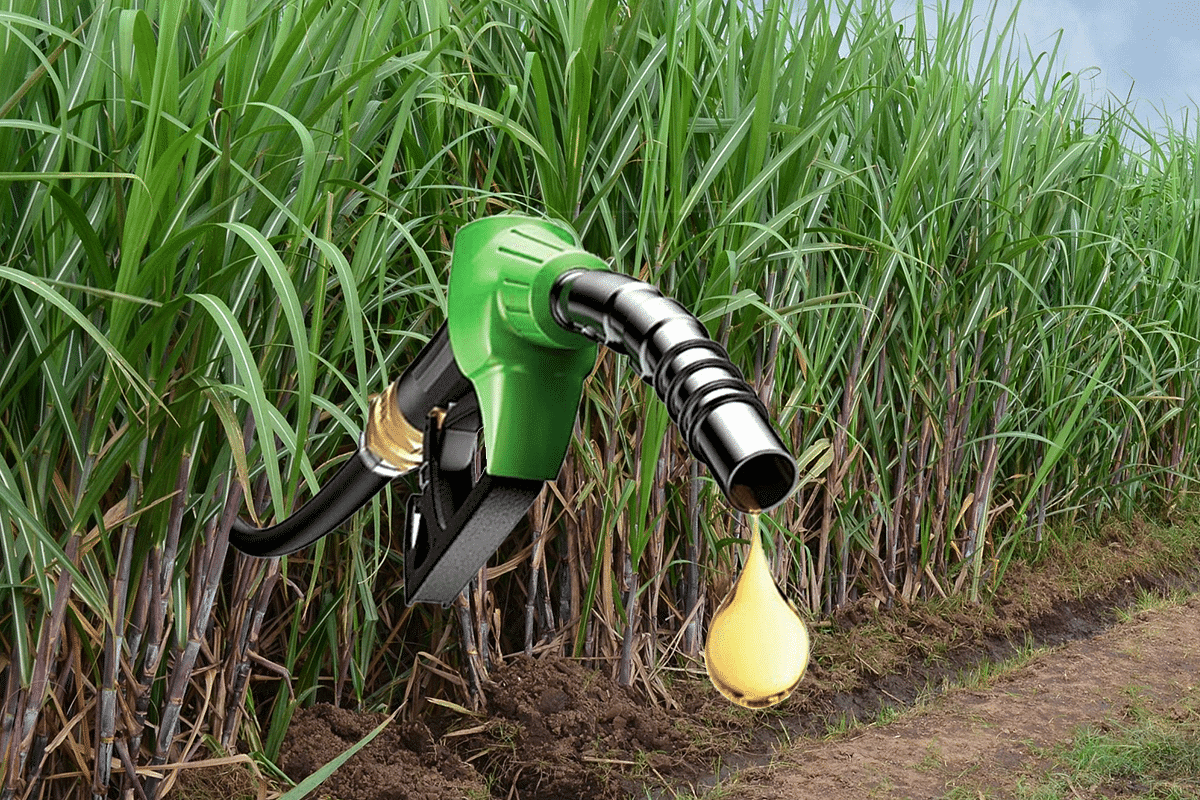News Brief
New Milestone: Oil Marketing Companies Achieve 9.99 Per Cent Ethanol Blending Much Ahead Of Target
- The oil marketing companies have crossed the threshold much ahead of the year-end target.
- They are now on course to achieve 10 per cent ethanol blending levels by the end of ensuing ethanol supply year (ESY) 2021-22.

Ethanol (Representative Image)
In a major achievement, oil marketing companies (OMCs) have achieved 9.99 per cent ethanol blending. The information was shared by Union Minister for Petroleum and Natural Gas, Hardeep Singh Puri on his Twitter handle on Monday (9 May).
The OMCs have crossed the threshold much ahead of the year-end target and are now on course to achieve 10 per cent ethanol blending levels by the end of ensuing ethanol supply year (ESY) 2021-22 (1 December 2021 to 31 November 2022).
What Is Ethanol Blending?
Pure ethanol — 100 per cent ethanol or E100 — could theoretically be used to power vehicles, but generally isn’t, due to technical challenges and lack of financial viability.
Ethanol thus is mixed with petrol to form different blends. The commonly used blends are E5 (5 per cent ethanol, 95 per cent petrol) E10 (10 per cent ethanol, 90 per cent petrol), or E85 (85 per cent ethanol by volume and known as flex fuel).
Ethanol blending leads to decreased emissions, significantly benefits the economy and has proved to be a boon for farmers.
The National Policy on Biofuels — 2018, provides an indicative target of 20 per cent ethanol blending under the ethanol blended petrol (EBP) programme by 2030.
Based on the encouraging initiatives on supply side of ethanol, the government has advanced the target of achieving 20 per cent ethanol blending in petrol from 2030 to 2025-26. This was announced by Prime Minister Narendra Modi on 5 June 2021 on World Environment Day while releasing the report of expert committee on “Roadmap for ethanol blending in India 2020-25”.
The ambitious target is a key element of the economy-wide energy transformation. From just 5 per cent blending in 2019-20 to 8.1 per cent in 2020-21, the energy sector is marching ahead and is on course to achieve the 20 per cent target by 2025-26.
Supply Scenario
Currently, the ethanol economy in India is pegged at Rs 20,000 crore, which is being targeted to reach over 2 lakh crore. India wants to follow in the footsteps of countries like Brazil that have been using ethanol in their transport industry for more than 60 years and have a compulsory blend of 27 per cent ethanol in petrol.
The ethanol supply under the EBP programme, which was only 38 crore litres in ESY 2013-14, has increased to 173.3 crore litres during ESY 2019-20 and 302 crore litres during ESY 2020-21, government data showed. This has helped achieve approximately 8.1 per cent blending in ESY 2020-21. This is an increase of 61 per cent, up from 5 per cent blending achieved in ESY 2019-20.
According to Indian Sugar Mills Association (ISMA), 10.5 billion litres of ethanol will be required to achieve 20 per cent blending targets by 2025-26. Out of the total requirement, 6-6.5 billion litres are expected to come from sugarcane and molasses while 4-4.5 billion litres from grain and corn.
With a view to achieve the ethanol blending targets, the government has allowed production of ethanol from different feed stocks viz molasses, cane juice, sugar syrup, sugar and damaged food grains including surplus FCI rice, maize, etc, by the distilleries either attached with sugar mills or standalone.
OMCs have also signed long term ethanol off-take agreements with prospective project proponents to set up dedicated ethanol plants in deficit states.
Introducing ElectionsHQ + 50 Ground Reports Project
The 2024 elections might seem easy to guess, but there are some important questions that shouldn't be missed.
Do freebies still sway voters? Do people prioritise infrastructure when voting? How will Punjab vote?
The answers to these questions provide great insights into where we, as a country, are headed in the years to come.
Swarajya is starting a project with an aim to do 50 solid ground stories and a smart commentary service on WhatsApp, a one-of-a-kind. We'd love your support during this election season.
Click below to contribute.
Latest